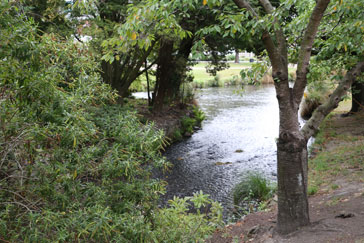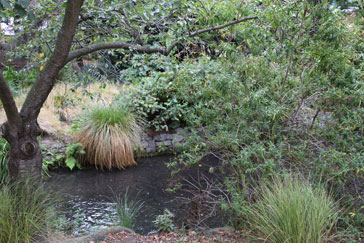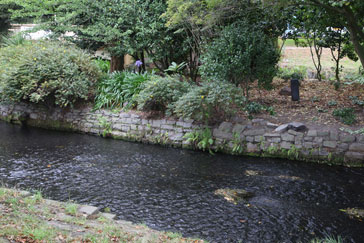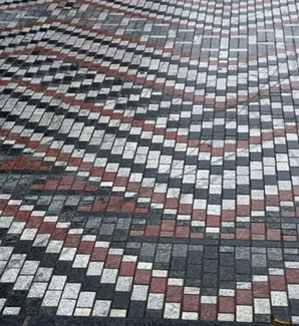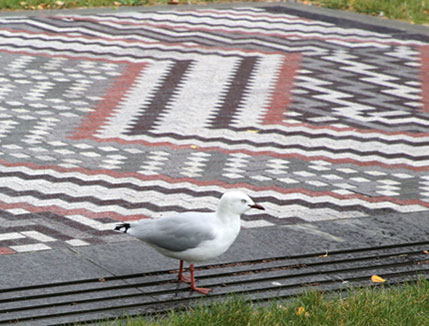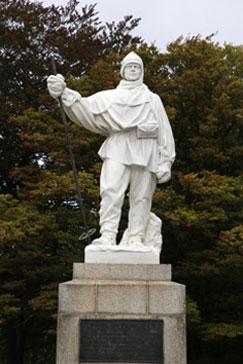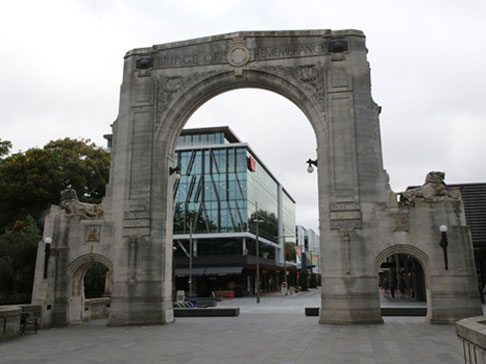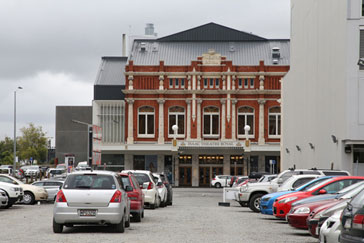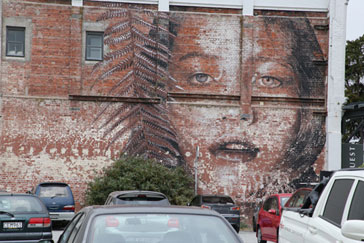Childhood Dreams
Downtown Christchurch
On Tuesday, February 22, 2011 at 12:51 PM local time, a magnitude 7.1 earthquake struck Christchurch killing 185
people and causing widespread devastation. I had, of course, heard about it, but I didn't really understand the
extent of the damage, and it was surprising to discover that 9 years later the city is still very much in recovery
mode. Much of the downtown is under construction or being used as parking lots. Rather than just rebuilding, the
city seems to be reinventing itself at the same time.
At 15 stories tall, our hotel seemed to be the tallest building in the area. Here are some pictures taken from the
window in our room. Remember, this is downtown in the city that once had the second highest population in New
Zealand. After the earthquake, many people left and it is now the third largest city.
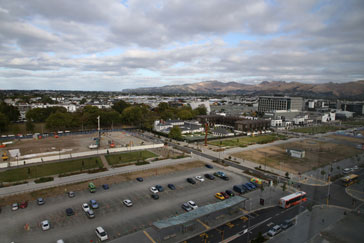
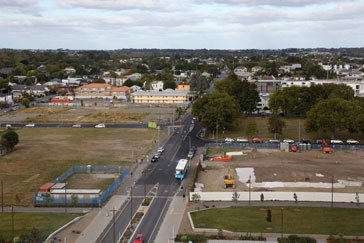
The downtown area is also riddled with peculiar sights like this one just across the street from the Casa Publica. The
flooded ruins of this office building, destroyed by the earthquake, have become a sanctuary for an extremely rare sea
gull found only in New Zealand called the tarāpuka. The gulls are protected from predators by a fence and from
human interference by the threat of a fine up $100,000 and a 2 year prison sentence.
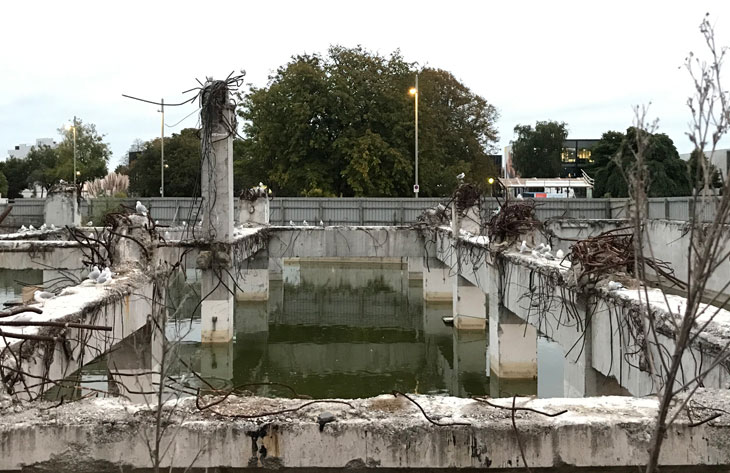
The city is centered around Cathedral Square where historic Christchurch Cathedral once proudly stood and locals and
visitors gathered to relax, eat, attend community events, and watch street performers and political speakers. Unfortunately,
the area was hit so hard by the earthquake in 2011 that several buildings had to be totally demolished, and the square was
closed to the public for over 2 years.
The cathedral itself suffered such extensive damage from the earthquake itself and subsequent search and rescue operations
that the Anglican Church decided to replace the ruins with a new structure. Various heritage groups,including UNESCO,
objected to this decision, and after several years of legal proceedings, it was agreed that the church would be restored
with the aid of government grants and loans. Restoration work finally began in 2018 and is expected to take about 10 years.
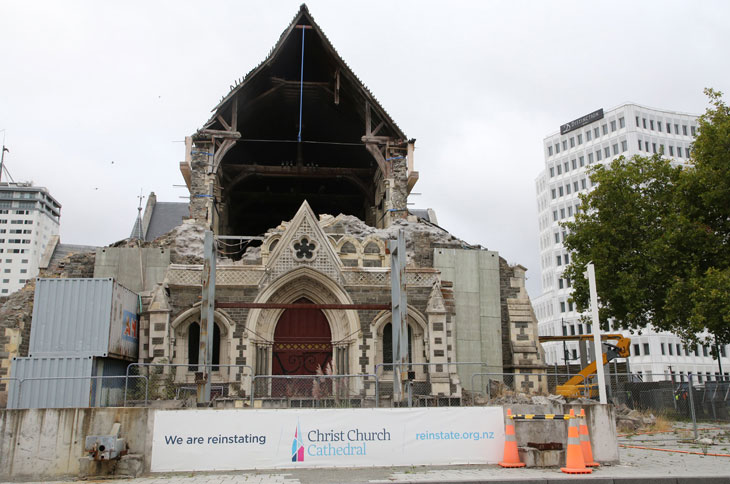
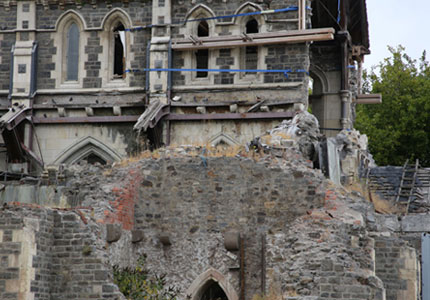
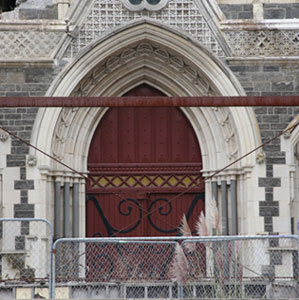
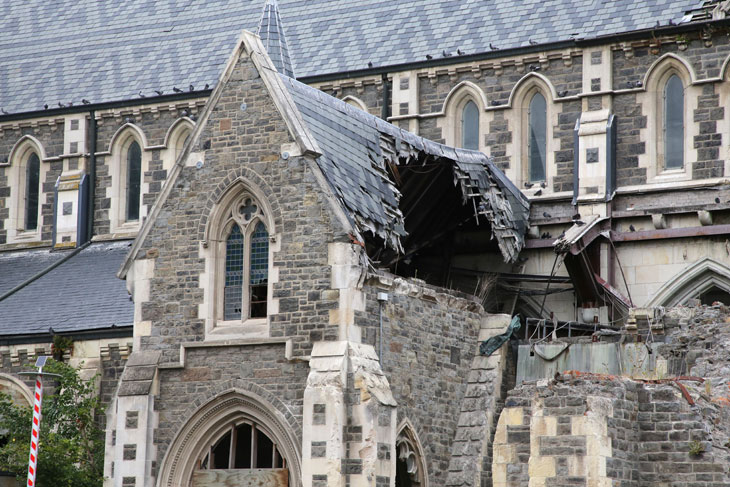
Despite all the work that remains to be done, there is no shortage of art in Cathedral Square.
I was impressed by The Chalice, a sculpture designed by internationally renowned artist Neil Dawson who was born in
Christchurch. The artwork was commissioned to celebrate the new millennium and the 150th anniversary of the founding
of Christchurch. The cone is formed from native leaf patterns cut from aluminum sheets and welded into position on the
frame, and at night, it's lit by a floodlight inside the base.
Another renowned work near the cathedral is the statue of John Robert Godley, the founder of Canterbury. It's the only
example of the work of famous sculptor Thomas Woolner in New Zealand. Although it toppled and sustained damage during
the earthquake, it was restored and reinstated.
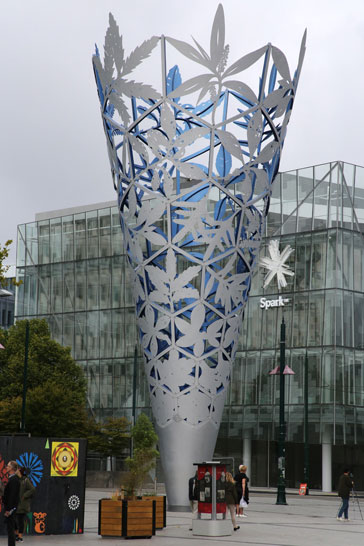
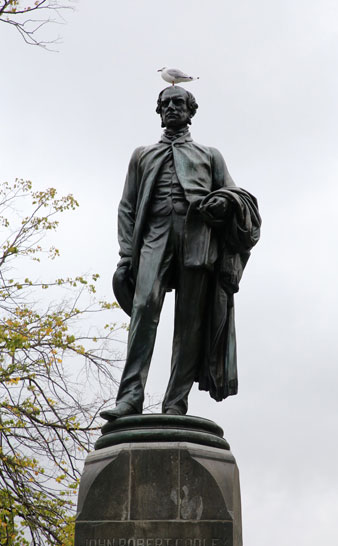
There is also this cairn of river stones which was built during a political protest in 2010 when about 4000 people
gathered in Cathedral Square in response to the replacement of elected environmental officials with appointed ones.
The displaced officials were said to be corrupt, but it is widely believed that they were replaced so that more water
could be diverted from certain rivers for irrigation. Attempts to have the cairn removed over the years have met
with additional protests.
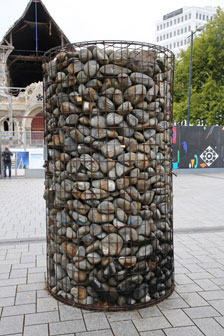
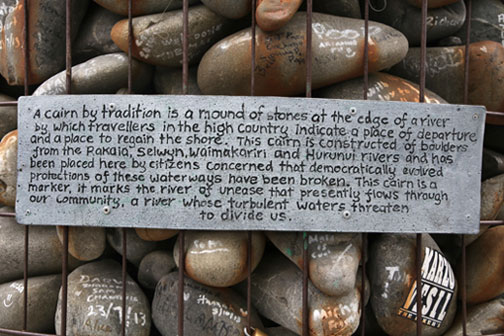
In case you're having trouble reading it, a plaque on the cairn says:
A cairn by tradition is a mound of stones at the edge of a river by which travellers in the high country
indicate a place of departure and a place to regain the shore. This cairn is constructed of boulders
from the Rakaia, Selwyn, Waimakariri and Hurunui rivers and has been placed here by citizens concerned
that democratically evolved protections of these waterways have been broken. This cairn is a marker,
it marks the river of unease that presently flows through our community, a river whose turbulent waters
threaten to divide us.
Just beyond the square, the Avon River flows.
I enjoyed coming upon a series of tile inserts along the river that are part of an art project called Nga Whariki
Manaaki - Woven Mats of Welcome. When completed, there will be 13 of these patterns which represent the woven mats
used in a traditional welcome ceremony.
A dazzling white statue of explorer Robert Falcon Scott who died in an attempt to beat Roald Amundsen to the pole
stands just outside Cathedral Square. The marble statue was carved by his widow, Kathleen Scott. It also fell and split
in half during the earthquake, but has been restored.
If you walk along the river a short distance, you will come upon The Bridge of Remembrance. The arch was built to honor
those who died in World War I and subsequent conflicts.
It took almost 4 years to restore the Isaac Theatre Royal after the 2011 earthquake, but the heritage building has
been returned to its former glory. It is the only Edwardian style Theatre still operating in New Zealand.
There is also a lot of street art adorning the sides of buildings and fences.
Christchurch also has a rather nice, very modern, art museum called Te Puna O Waiwhetu. When I visited, several of the
galleries were closed because the exhibitions were changing, but I spent a pleasant hour wandering around. The piece I
enjoyed the most was this sculpture which stands outside the building - a work that is a symbol of the resilience of
the people of Christchurch and their dedication to rebuilding their city and making it better than ever.
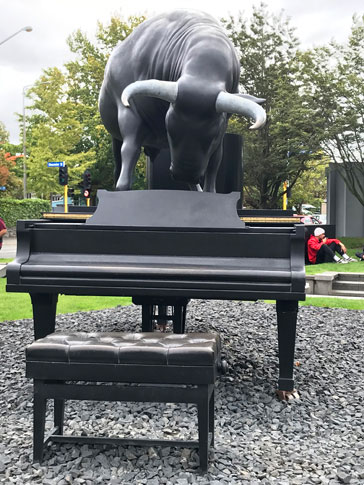
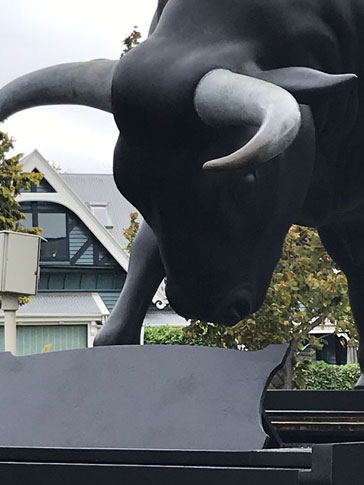
The sculpture is called "On Looking into Chapman's Homer". It was originally created by local artist Michael Parekowhai.
for the 2011 Venice Biennale - one of the biggest art shows in the world. After a stint at the Musee de quai Branly in
Paris, it came to Christchurch in June, 2012. This bull was set up alongside another seated bull just outside the devastated
city center in an empty lot. As part of the exhibit, a red carved Steinway piano was played in an upstairs room in an adjacent
building.
The exhibition was a rousing sucess. The sculptures immediately became a symbol of the city's creative rebirth, and
over the next 30 days, 55,000 people came to see them. A public fundraising was held, and this bull was purchased and
placed permanently at the gallery.
It may be happening slowly, but I have no doubt that downtown Christchurch will be a beautiful and very liveable place again
one day.











